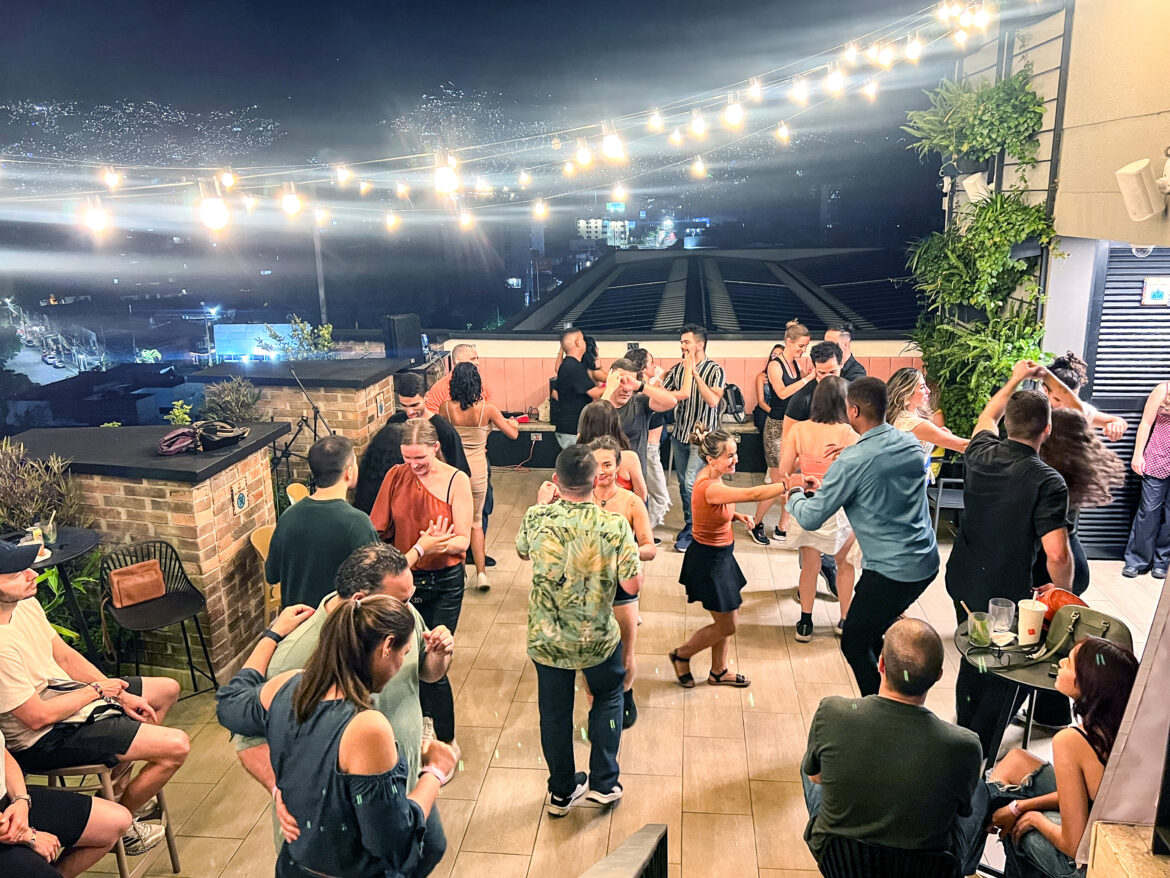Even though I’m a lifelong dancer, when it came to choosing Colombia to work remotely this winter, dance didn’t even factor into the decision making.
For the past few years, Medellin has been listed as a top digital nomad hub. In addition to its idyllic weather, the “City of Eternal Spring” has a livability that’s easy and affordable.
In that sense, Medellin is ideal for remote working. Many coffeeshops set up dedicated areas for people to work. Several hostels seamlessly blend co-living and co-working together, creating the ideal space for digital nomads to thrive.
From all over the world, countless people, including other entrepreneurs, have chosen to make Medellin their home – either part-time or permanently.

As the “work from anywhere” trend continues growing, governments are wise to see it as an opportunity.
Once a city riddled with drugs and violent crime, Medellin is now a thriving metropolis of 2.5 million people. Spanish, African and indigenous influences make up a vibrant culture of art, music – and yes, dance.
For the past decade, salsa dancing has been my go-to activity. While I’ve danced my whole life, I had taken no official salsa lessons prior to going to Colombia. Instead, I depended on my foundation of jazz dance, along with a smattering of ballroom and swing, to pick up steps over the years.
Naturally, since Colombia is in South America, I knew dancing would be there. But I had no idea the extraordinary level of dance I’d be exposed to, nor how deeply devoted the dancers are to perfecting their skills.
A month earlier, we spent two weeks in Puerto Rico where I enjoyed a few nights out salsa dancing in Old San Juan. I figured Colombia’s social dance scene might be similar – casual, fun and recreational.
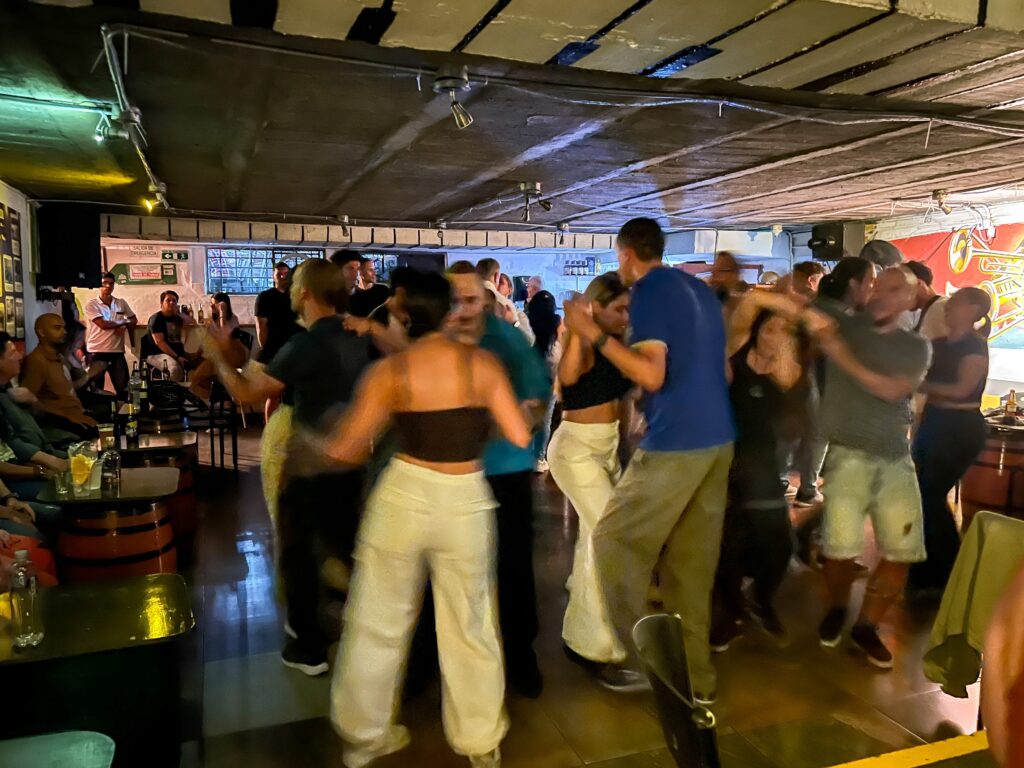
But just one week in, I began to realize that dance in Colombia is on a whole other level.
Not only is the quantity, and quality, of dancers impressive, but dancing (and music) is literally part of Colombia’s DNA. It’s baked into the culture – a part of everyday life that without it, well, it wouldn’t be Colombia.
In hindsight, it’s clear that I was coming into awareness – not just about dance in Colombia, but the role that dance has consistently played throughout my life. I may not have set out to reclaim my passion for dance in Medellin, but it got uncovered instantly.
Our first week in Medellin, I attended a social at nearby Selina where many attendees were guests of the hostel and beginner dancers. But as it got later in the evening, more advanced local dancers, including instructors, showed up who I had the opportunity to dance with. They all complimented me on my dancing – which as a “gringa,” was incredibly flattering.
As the days went by and I attended more socials, I began to see the same faces. I even ended up running into one American woman, Deidre,* at a coffeeshop after a night out dancing. When I asked what brought her to Medellin, she relayed that every year, she takes off a few weeks off to train at an academy and be part of a performance group. I was totally intrigued.
I also met Karlos,* an American expat and relatively new salsa dancer, who splits his time between Medellin and Mexico City. Both cities have prominent dance scenes. Medellin is where he first learned salsa which hooked him from the beginning. He told me about Al Mambo Dance Project – the same dance academy where Deidre did her training. Ironically, it was located in Belen, the same neighborhood we were staying in.
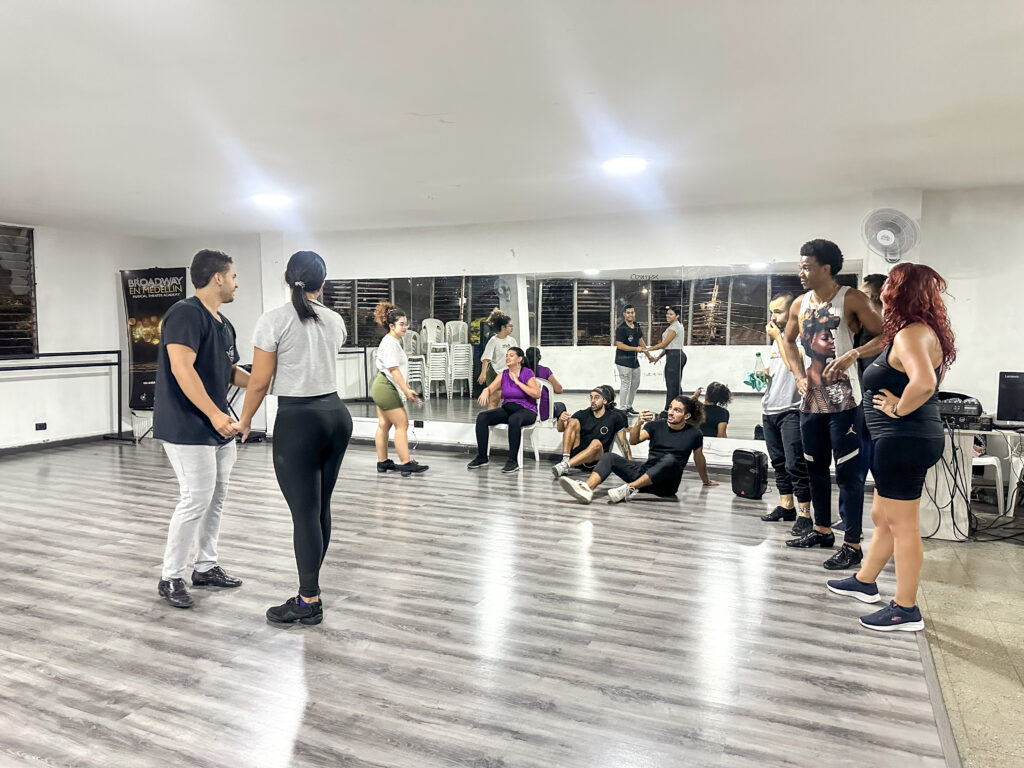
I figured having one of Medellin’s top studios down the street from me was a serendipitous sign.
I contacted the director and after our first lesson, something ignited in me. It was like all my happy feelings from dancing on and off through the years came rushing back.
I immediately signed up for a month of unlimited classes, as well as a few private lessons. Within a week of being in Colombia, dance was now deeply ingrained in my new rhythm of life – and I was loving every minute of it.
A typical group salsa class at Al Mambo runs 90 minutes long. Rotating instructors begin by teaching a “shine” routine – solo footwork and movements, that allows dancers to express their individual style and skill. After that, students learn a routine for partner work, practicing patterns repeatedly with different partners to bake them into muscle memory.
Al Mambo is where I began to understand more about the various styles of salsa dancing.
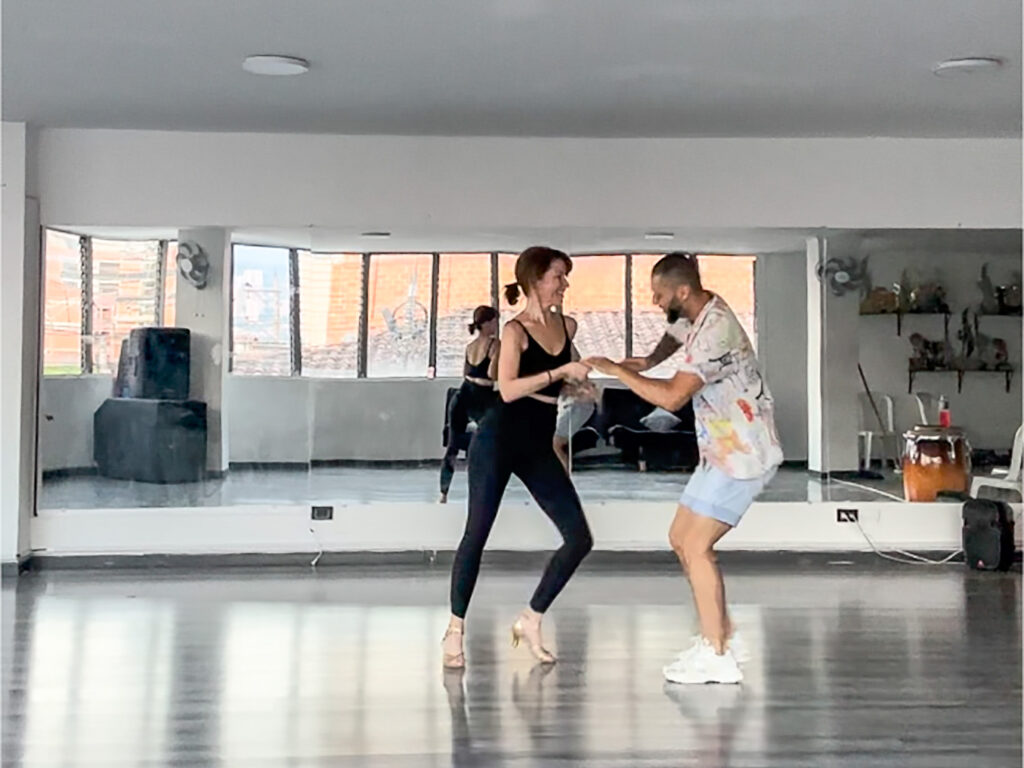
My time at Al Mambo opened up an entirely new world for me and my dancing.
I learned I’ve been dancing Salsa on 1 (LA Style), where the basic step starts with a forward break on the first beat of the music. Because it’s easier to hear the downbeat, people tend to dance Salsa on 1 in social dancing.
Conversely, Salsa on 2, known as Mambo or New York Style, emphasizes breaking on the second beat of the music. This gives the dance a more syncopated look and feel compared to Salsa on 1. It’s an entirely different sensation – smoother with a greater focus on musicality and partner connection.
Experiencing this newfound energy was like discovering salsa for the first time – and it blew my mind.
In addition to salsa, I also took a weekly Afro-Cuban class at Al Mambo. This class focuses on the foundational movements, rhythms, and techniques that influence salsa and all Latin dance styles. Here, I was able to learn about musicality and how to move to complex rhythms and syncopated beats.
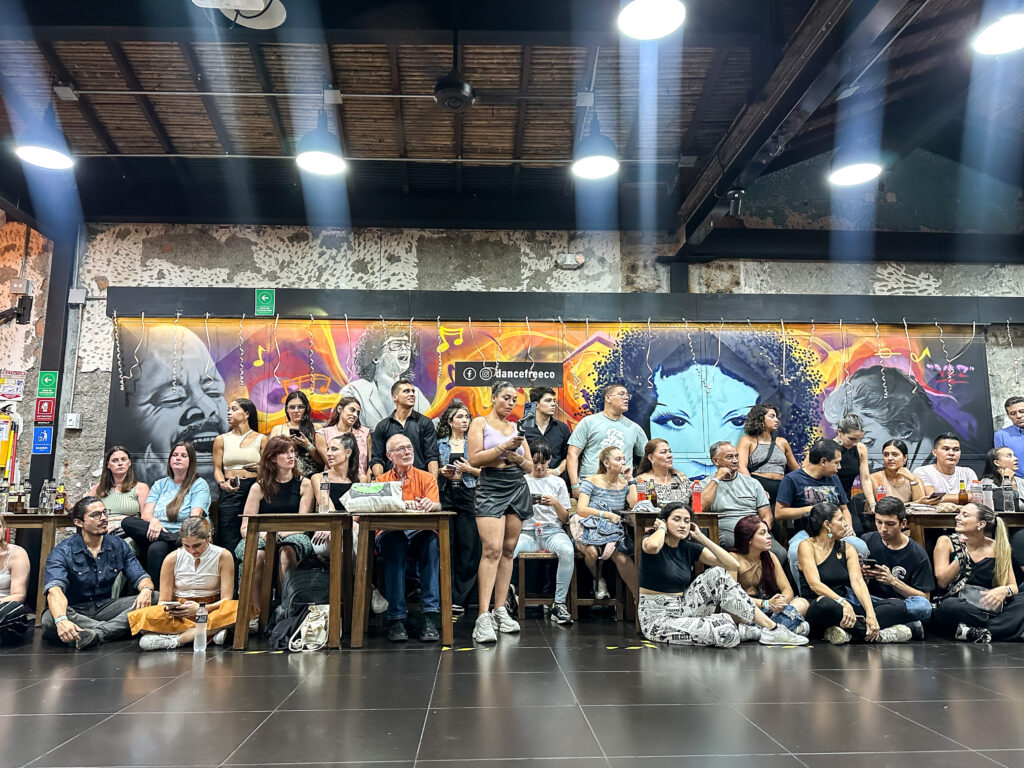
This newfound knowledge was both exhilarating and overwhelming.
At times, my body would recall familiar movements but would express them in different ways due to the music. Other times, the choreography was totally foreign to me – a difficult, but welcome challenge. I knew I could eventually get it, but I needed more practice. In fact, I was quite certain that daily dancing was now a mandate.
Before I knew it, I was dancing up to six hours nearly every day of the week. After work, I’d go to one or two classes at Al Mambo, followed by evening socials at local studios like DanceFree and Nueva Guardia.
Within a month, I’d become fully integrated into the Medellin dance community. I made friends with both locals and visitors. Despite being a foreigner who hardly speaks any Spanish (something I’m currently working on rectifying), I also became close to the group of students at Al Mambo who showed up faithfully for every class. They always greeted me with a kiss on the cheek as if they’d known me for years – which says a lot about the welcoming, kind spirit of Colombians.
One of my favorite memories was when a few of the students performed in a showcase at DanceFree. Everyone in the class was there to cheer them on. The energy was palpable and I couldn’t help but wish that I could join them in the performance as well.
It’s no exaggeration to say my new lifestyle was the literal interpretation of “living your best life.” Not only was my passion for dance reignited, I was in great shape and felt truly alive. Every day, I looked forward to dancing more and learning more.
Instead of work automatically coming first, dance became my primary focus. I felt my priorities shift to make time for it. Ironically, not only was I more productive with my work, the outcome was better as well.
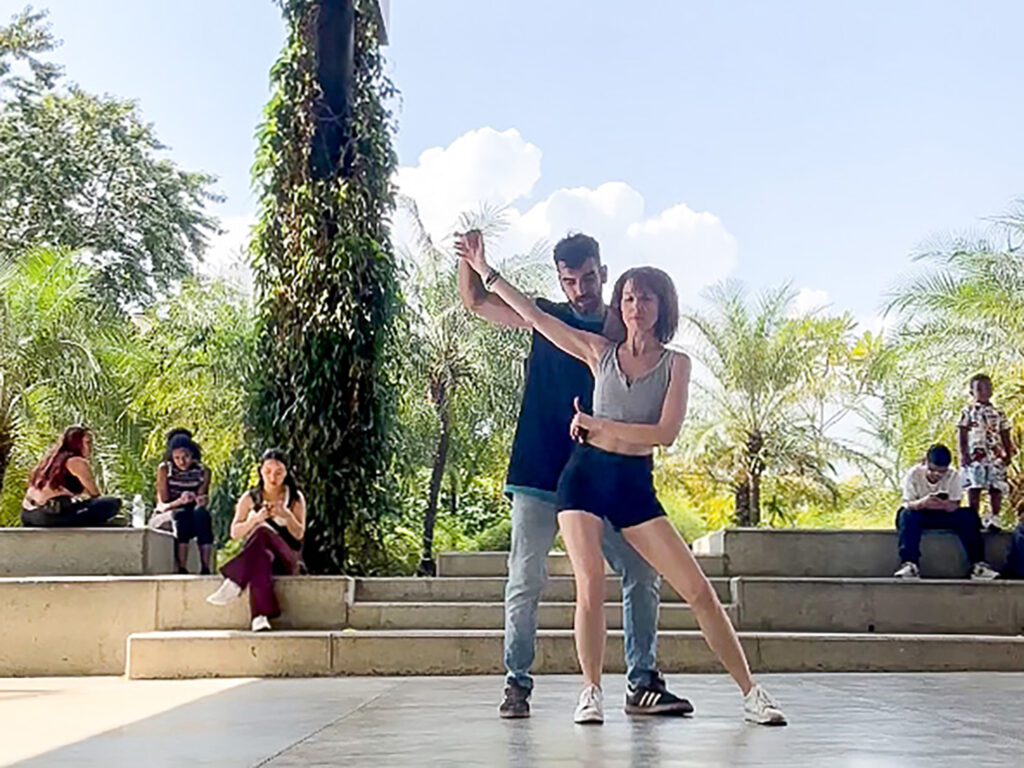
In addition to salsa, I took up private lessons in bachata as well – a dance that originated in the Dominican Republic and is particularly prevalent in Medellin.
Like salsa, bachata has evolved into different styles including Smooth, Urban and my personal favorite: Sensual.
Bachata has a completely different vibe than salsa. Danced to a slower tempo, the basic step typically involves a side-to-side motion with a tap. It incorporates nuanced hip movements, body rolls, and close partner connection. Whereas salsa is often more dynamic and energetic, bachata is more expressive and intimate.
Six weeks flew by in Medellin. I felt like I had only scratched the surface with everything I’d learned about salsa and bachata dancing. I found myself yearning for more time to learn other partner dances like Zouk from the French Caribbean and Kizomba from Southern Africa.
As it got closer to our departure from Medellin, I dreaded leaving.
Even though we still had two more weeks in Colombia, I felt like my fantasy was coming to an end.
Gustavo,* another American expat I met, told me that to live in Medellin, he simply rents out his home in New York. The sizeable passive income allows him to be semi-retired and take dance lessons every day.
“People think I’m wealthy… ,” he said to me. “But I just changed my priorities – plus I’m living here for half the cost. It’s really a no-brainer.”
Another American digital nomad I met, Makena,* who is considering multiple places to settle down, keeps coming back to Medellin.
“Dancing here every day can’t be beat,” she says. “I don’t really want to live my life any other way right now.”
Sensing my gloomy outlook during my last week in town, Karlos remarked rather factually, “you know, you don’t have to leave.”
That thought stuck with me for the remainder of our time in Colombia. After Medellin, we headed to Cali for a week. There, I continued taking private and group lessons at La Escuela de Baila – a school recommended to me by a salsa friend back in the states.
In Cali, I learned yet another dance style: Salsa Caleña (Cali Style) characterized by fast, intricate footwork and energetic movements. I quickly fell into the same rhythm I had in Medellin: working during the day, going to dance classes, and socials in the evening at places like La Caldera del Diablo, La Topa Tolondra Nightclub and El Rincón de Heberth.
At La Topa one night, we got to witness top champions perform. Their awe-inspiring energy and moves unlocked yet another level of understanding within my dance knowledge. And I continued to be hungry for more.
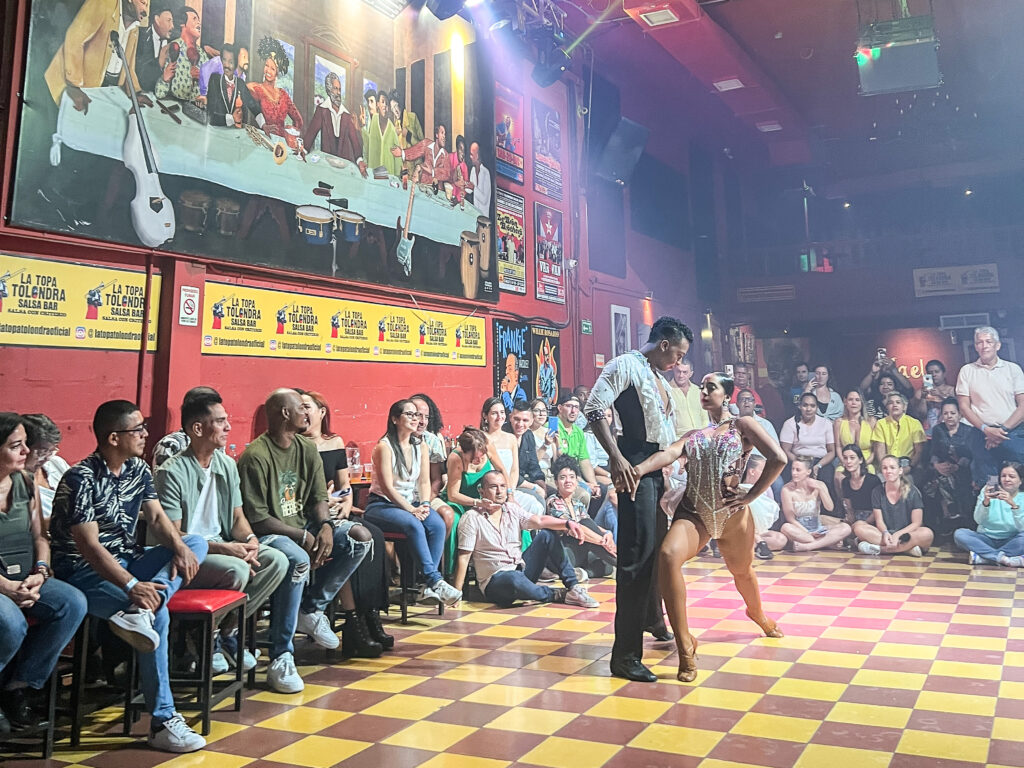
In just two months in Colombia, the dancing I’d been exposed to was more than I had experienced in my entire lifetime in the states.
For the first time, I actively wished to be younger. Not just for more physical capability, but to have all this dance information incorporated earlier in my life. But back then, I focused all of my energy on building a career and being a dutiful Gen X professional in Corporate America.
Suddenly, I wondered what I’d been doing for the last 10 years. Where had the time had gone – both in Colombia and my life? The common phrase, “it’s never too late” popped into my head and while cliché, it’s indeed true. After all, nobody is getting younger. Time marches on whether or not we make the most of it or not.
And I came to a simple realization. Opportunities for growth and improvement are always available to us, no matter our stage in life. We just have to be willing to put in the time, effort and dedication towards pursuing them.
I follow a few inspiring women on Instagram – one of which is Kim Hale, a lifelong dancer that decided to pursue Broadway later in life. Her motto is: “Dreams have no deadline.”
Rather than wishing to turn back time, I’ve shifted my perspective to simply be gratitude for the awakening I’ve had and the potential I have going forward. Colombia reminded me how much dance is a part of who I am. It taught me that life is indeed short, and because of that, we have to prioritize what’s most important to us. We can’t lose sight of our passions – the things that make us who we are and make us feel alive.
Thanks to Colombia, I can’t imagine not dancing every day – and that’s exactly what I intend to keep doing going forward.
*Names have been changed

